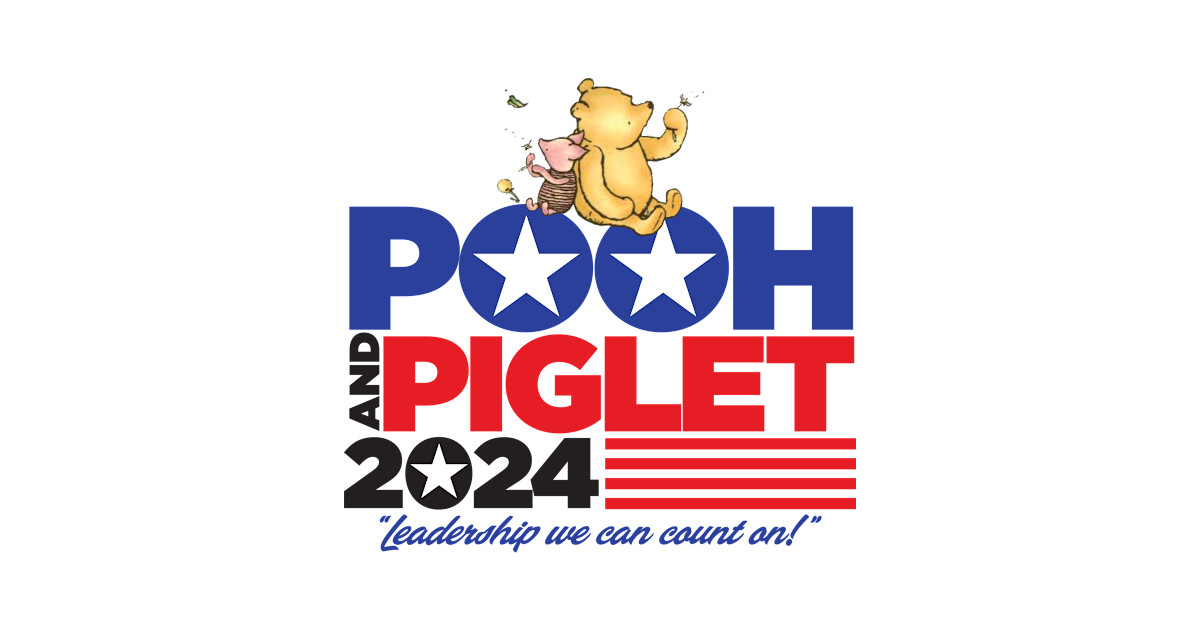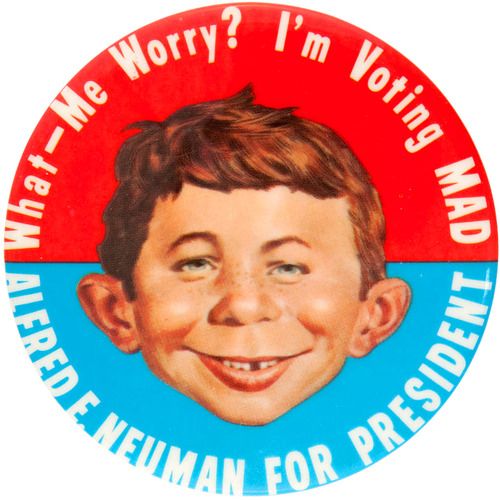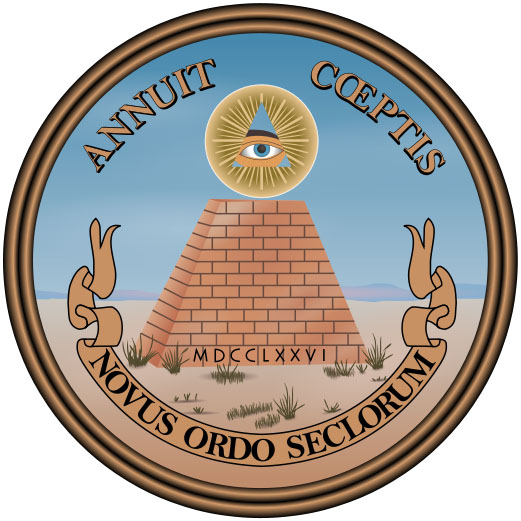After 12 years of increasingly nasty & generally appalling American politics, it's time to fire up a simple, yet remarkably accurate model for using "free market" wagers to predict the winner of the 2024 Presidential contest.
To find out about the general assumptions & simple math of the model (which I devised in 2004), click this link. Since 2004, it has always been correct: See how it performed in 2006, 2008, 2010 & 2012.
What is different: The earlier models used data from the British betting website TradeSports, but TradeSports political wagering was shut down by the U.S. government after 2012. However, several websites have recently begun taking political wagers. I'm using daily data from Polymarket (an American financial exchange founded in 2020) since it publishes wagering contracts at the state level. Several other websites also publish aggregate wagering probabilities for the two candidates, but don't provide state-by-state granularity; these are summarized on the Real Clear Polling website.
There are some caveats concerning Polymarket's data & the wagering model. First, its political wagering market is closed to people in the United States, apparently due to legal constraints. On the other hand, in addition to personal gain (or loss), that fact may cause such a market to possibly be more objective, assuming its participants have actually done state-by-state research. In addition, as in financial markets, a few large bettors could perturb & / or manipulate the market itself, perhaps achieving gain indirectly or counter-intuitively. In fact, some interesting articles have recently appeared in the Wall Street Journal about the predictive value of such markets & how "whale" bettors might affect them ( see: ref01 ref02 ). Note that the wagering model does not account for minor factors such as lack of contracts for D.C. (the model allocates all 3 D.C. votes to Harris) or the fact that some states (such as Maine & Nebraska) are not "winner takes all".
And of course, lots of things can happen in late October: Even higher levels of candidate hyperbole / lies, massive ad spending, scandals, hoaxes, terrorists & who-knows-what-else may sway the sentiment that informs wagering. The robustness of wagering models is sure to be tested very soon.
In any case, forget about those highly subjective and unstable Opinion Polls & take a look at the current 2024 Presidential Wagering Model Prediction shown below (or download the pdf):
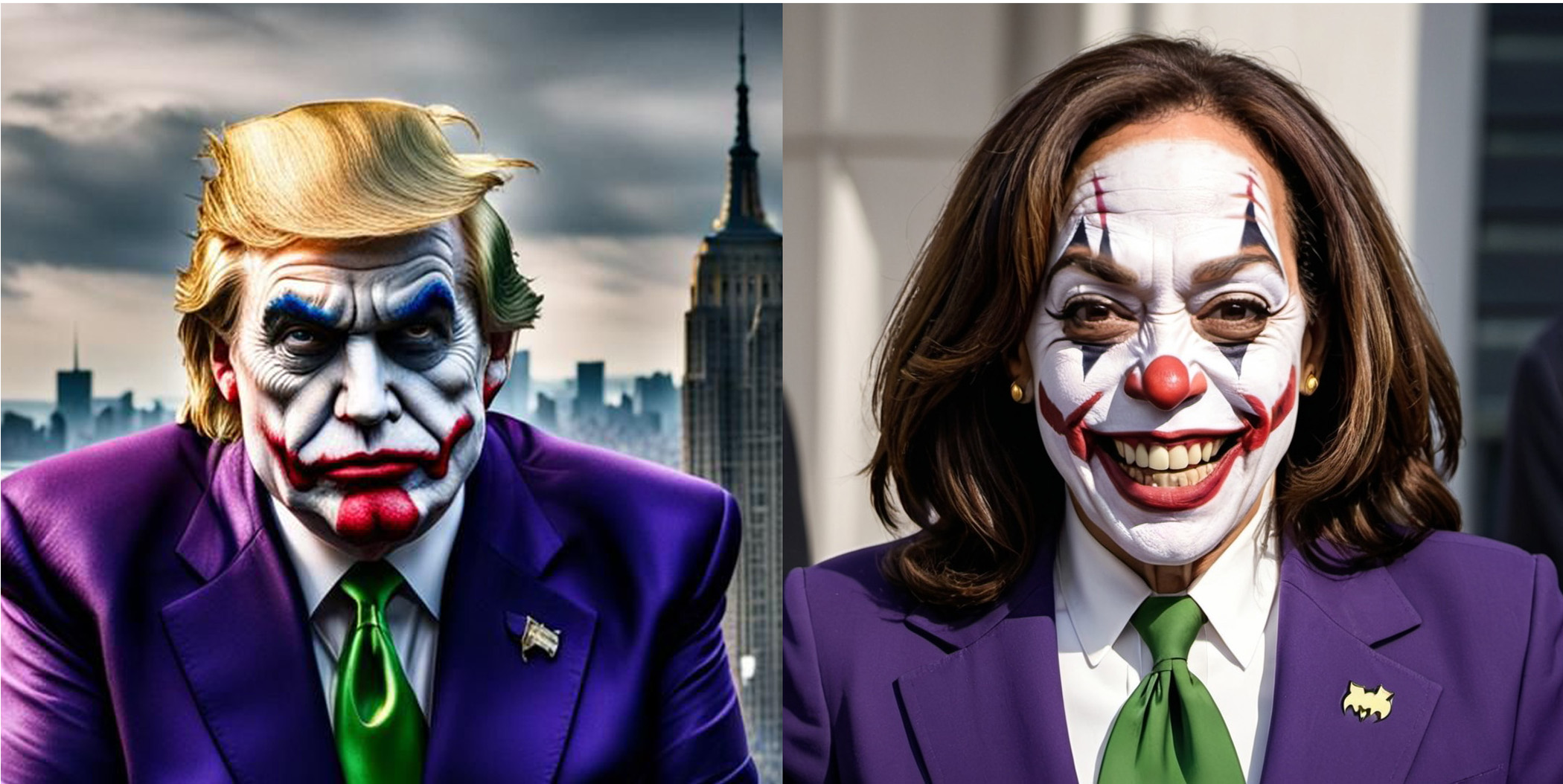
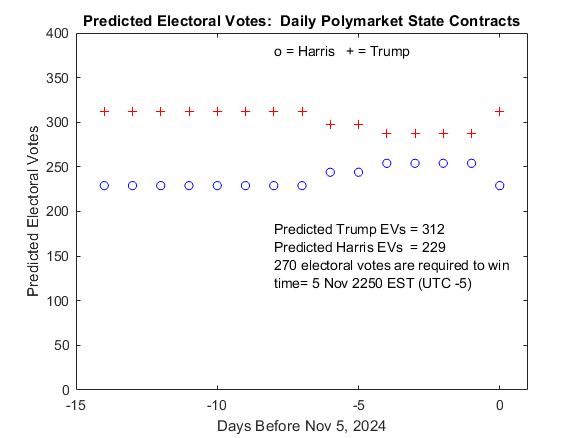

Will the Wagering Model triumph again? -- Indeed it did !!
13 December -- The wagering model had correctly called the election 14 days before the election, & had converged by 2100 on Election Day to a clear victory for Mr. Trump. By 22:50 it had determined the final electoral vote count as Trump= 312 & Harris= 229. At the time of this writing, the Wall Street Journal shows Trump= 312 & Harris= 226. Weeks after the election, votes are still being counted...
The WSJ reports the most recent popular vote as:
| Donald Trump | Republican | 77,236,278 (49.9%) |
| Kamala Harris | Democratic | 74,938,525 (48.4%) |
The magnitude of Trump's popular vote win over Harris is comparable to Obama's 2016 win (51.0%) over Romney (48.0%).
Third party candidates included:
| Name | Party | popular votes (per cent) |
| Jill Stein | Green | 861,089 (0.55%) |
| Robert Kennedy, Jr. | Independent | 756,219 (0.49%) |
| Chase Oliver | Libertarian | 650,116 (0.42%) |
| Claudia De la Cruz | Socialism and Liberation | 166,174 (0.11 %) |
| Cornel West | Independent | 82,668 (0.05%) |
| Randall Terry | Constitution | 41,281 (0.03%) |
| Peter Sonski | American Solidarity | 41,011 (0.02%) |
| Shiva Ayyadurai | Independent | 28,429 (0.02%) |
| Joel Skousen | Constitution (factions) | 12,805 (0.01%) |
As for opinion polling, as noted in previous runs of the wagering model, such polls are often extremely inaccurate even if they often show precision (i.e., reproducibility). In the 2024 election polling yielded notably bad results, & I will write more about this soon. Perhaps this election marks the beginning of the end for traditional polling methods, making them the "buggy whips" of the 21st century, especially given the success of innovative techniques such as wagering models & AI.
Some thoughts on why the opinion polls were so inaccurate will appear here soon.
Page Text Last Updated: December 13, 2024
Graphs are updated daily around 7-8 PM October-November 2024
